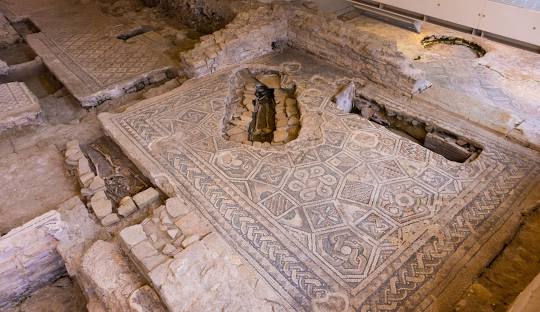Table of Contents
ToggleThe Origins: A Glimpse into Roman Medical Practice
A Roman Doctor’s Residence
The Surgeon’s House was built in the 2nd century CE as a home and workspace for Eutyches, a military physician. Its layout and structural design reflect both residential and professional functions, as doctors in ancient Rome often treated patients within their own homes. This dual-purpose setup was common among practitioners of the time, indicating that doctors, especially those who served the military, occupied an essential and respected place in society.
Tools of the Trade: Evidence of Advanced Medicine
Archaeologists uncovered an impressive collection of medical tools during excavations. The array includes various surgical instruments, such as scalpels, forceps, and needles, primarily made from bronze and iron. These tools offer insights into the advanced surgical techniques and medical knowledge of the period. Many items were sophisticated for their time, resembling tools still in use in modern medicine. The discovery of these tools underlines Rome’s contributions to surgical practice, likely inspired by medical knowledge inherited from the Greeks and Egyptians and further developed within the Roman Empire.

Decay and Transformation: The Shift to a Burial Ground
The Fall of The Surgeon’s House
By the 6th century CE, the house had fallen into disrepair, reflecting a period of social and political upheaval that led to the decline of many Roman urban centers. Rimini itself, like other cities, faced numerous changes during this period, including a decline in public infrastructure and maintenance. The abandoned house, no longer serving its original purpose, was eventually repurposed as a burial ground.
Burial Evidence and Cultural Practices
Numerous tombs were discovered at the site, some of which were dug directly into the house’s original floors, causing damage to the underlying structure. This repurposing of residential areas for burials is not uncommon in archaeological sites from periods of decline, where practicality and convenience often outweighed historical preservation. The layout and construction of the tombs hint at burial customs and beliefs, showing a simpler approach to burial rituals compared to the more elaborate customs of earlier Roman times.

Insights into Roman Society and Medicine
The Role of Physicians in Ancient Rome
Eutyches, as a military doctor, belonged to a respected profession. Roman physicians, particularly those who served the military, held a high social status. Their skills were critical in treating wounded soldiers and managing the health of military personnel. The discovery of Eutyches’ residence and practice illustrates the significance attributed to healthcare within the Roman military and society at large. This recognition of medical professionals demonstrates an organized, state-supported approach to healthcare that contributed to the success and expansion of the Roman Empire.
Roman Burial Practices and Urban Adaptation
The repurposing of The Surgeon’s House as a burial site provides insights into the cultural and economic transformations of the time. As resources became scarce and urban areas faced decay, Romans adapted to these conditions by reusing abandoned spaces. The simplicity of these later burials contrasts sharply with the grandeur of earlier Roman burial practices, reflecting a time of resource scarcity and changing cultural values.

Conclusion: Legacy of The Surgeon’s House
The Surgeon’s House in Rimini is more than a historical curiosity; it is a window into the daily life, medical practices, and evolving cultural values of ancient Rome. The dual legacy of this site—first as a residence and workplace of a military doctor, and later as a burial ground—captures the dynamism of Roman society and its ability to adapt to changing circumstances. By studying the artifacts and architectural layers of The Surgeon’s House, archaeologists and historians gain a deeper understanding of Roman medicine, social structure, and the shifts in cultural practices that occurred over the centuries.
In bridging the past with modern knowledge, The Surgeon’s House continues to offer invaluable lessons, reminding us of the importance of adaptability and innovation in both medicine and society.
